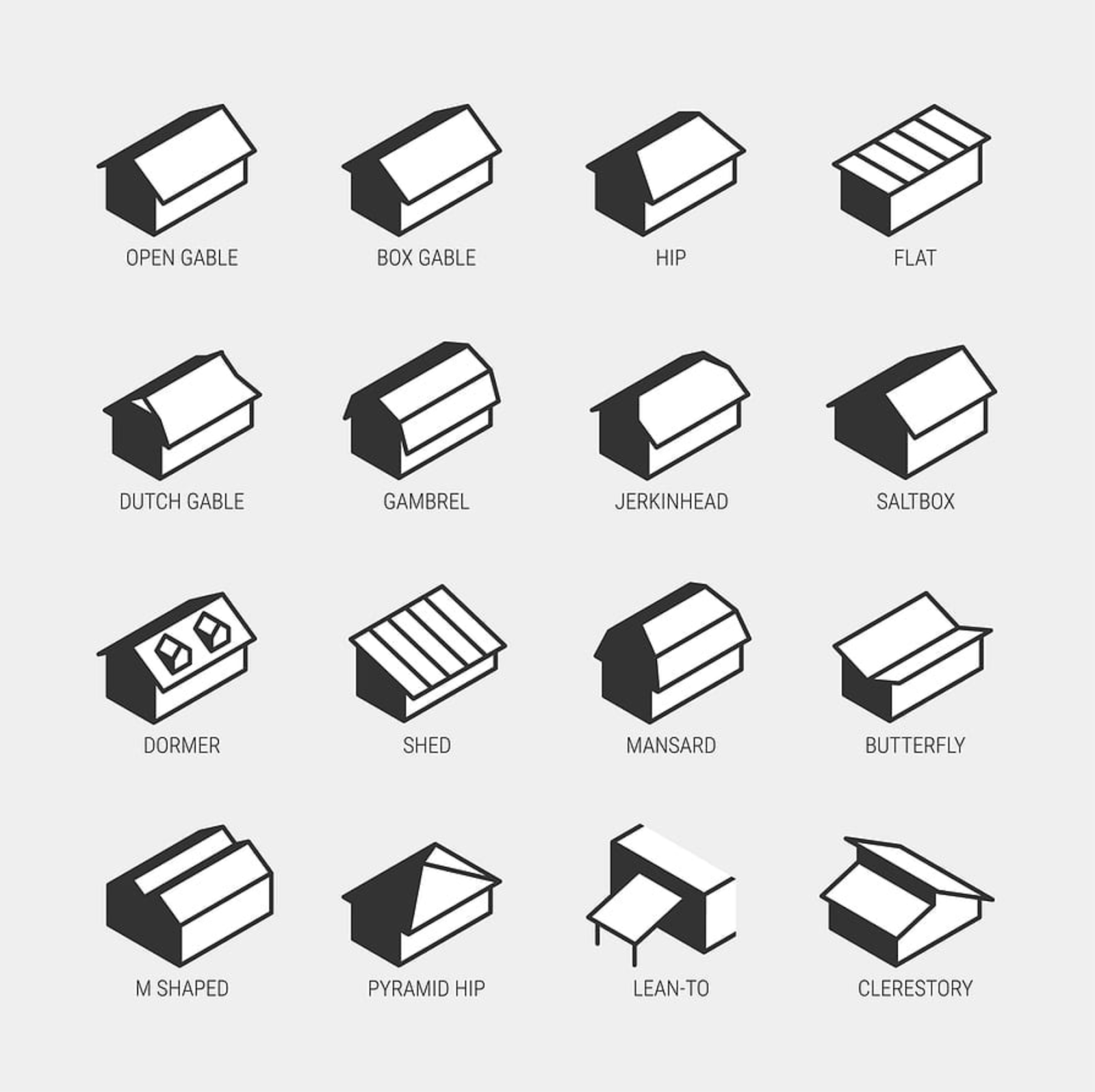Preparing + planning to build a home is exciting, but time-intensive when it comes to designing, planning, and budgeting. We have a few tips and tricks on how to keep the process as smooth and straightforward as possible. Here’s what you should know…
Roof Styles
When it comes to the look and feel of a roof, the possibilities are endless. Before you get overwhelmed by color, texture, and style combinations, let’s break down some timeless, trusted roof styles:
Something to remember as you do your research is the style of your roof should complement the architecture of your home. No matter what style you end up choosing, try not to get carried away. A good rule of thumb is simpler architectural roof styles are safer and stronger roof styles.
6 Common Architectural Roof Styles
-
- Flat Roof: This simplest roof style is easiest to install because it lacks the details of a traditional roof. If you’re going for a sleek, modern type of look a flat roof is a great option for you. However, remember that in the winter months, homes in the midwest get lots of snow, and removal is crucial on flat roofs.
Cathedral Ceiling: This type of roof is essentially one without an attic. This style creates lots of open space vertically inside your home. Think high ceilings and very open-concept rooms.
- Gable Roof: These roofs typically have an attic that has two sections whose upper horizontal edges meet to form its ridges. Think of homes in your neighborhood with multiple peaks – they’re most commonly gable roofs.
- Gambrel Roof: Some refer to a gambrel shaped-roof as a barn or shed-style roofing. These roofs feature a symmetrical two-sided roof with two slopes on each side. This is also called a mansard roof, which is a European style. Mansard means a roof that has four sloping sides, each of which becomes steeper halfway down.
- Asymmetrical roof: A roof with asymmetrical slopes which, similar to the cathedral ceiling, creates more space inside of the home.
- Hip Roof: These roofs are shaped like a pyramid with four, usually symmetrical, downward-sloping slides. Think of the basic houses we draw when we’re young – the roof is essentially a triangle atop our home.
Roofing Material to Consider:
-
- Asphalt: Asphalt shingles are a classic choice for roofing, and for a good reason too. These shingles are dependable and will provide decades of protection at an affordable price. Plus, asphalt shingles are available in a wide variety of colors, so you can pick the perfect match to complement your home. Especially in the midwest, asphalt roofing is tried-and-true and will stand up to all of the elements we experience. We can’t say enough good things about asphalt shingles!
- Metal: Chosen for their longevity and lightweight nature, metal roofs are another very popular roofing choice, especially as this trend grows. These require an initial investment upfront but will pay for themselves over time with the protection, durability, and energy efficiency they provide.
- Mixed Materials: Can’t decide? Like multiple looks for different parts of your roof? Get the best of both worlds by placing metal roofing on the front or more prominent spaces of your home with asphalt shingles on the sides and less visible parts.
Budgeting Tips + Advice
Before you start dreaming about what your perfect roof might look like, it’s a good idea to sit down and set some financial boundaries. That way you can narrow down the roof – architecturally and material-wise – that realistically fits your budget and the style of your home.
These are a few of the main elements that will determine the price of your roof:
-
Size and Pitch: The larger the surface area of your roof, and the taller it is, the likelihood that cost will increase. It doesn’t make your plans unachievable or unrealistic as long as you plan for it.
- Materials: Different roof styles come at different costs. Be careful not to skimp by choosing cheap materials for the sake of a more expensive-looking roof. Protecting your home is important – choose your materials wisely and budget for quality.
- Permits: These are a necessary expense to make sure your work is done up to your local city and state codes.
- Labor: More complex roofing styles and materials can sometimes require time from your contracting team to help. Making sure to have a clear conversation with your contractor upfront and get a quote before the work starts can help save you from expensive surprises down the road. Take some time to get to know what separates a great contractor partner, from a sketchy one.
There is a lot to consider when it comes to deciding on, and preparing for, a new roof on your home. But with a little planning in advance and a committed team at your side, building your dream roof should be a breeze.



 Cathedral Ceiling: This type of roof is essentially one without an attic. This style creates lots of open space vertically inside your home. Think high ceilings and very open-concept rooms.
Cathedral Ceiling: This type of roof is essentially one without an attic. This style creates lots of open space vertically inside your home. Think high ceilings and very open-concept rooms. Size and Pitch: The larger the surface area of your roof, and the taller it is, the likelihood that cost will increase. It doesn’t make your plans unachievable or unrealistic as long as you plan for it.
Size and Pitch: The larger the surface area of your roof, and the taller it is, the likelihood that cost will increase. It doesn’t make your plans unachievable or unrealistic as long as you plan for it.